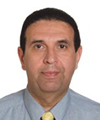
Mohamed Khaled Ahmed Azzam
King Abdulaziz Medical City -National Guard Hospital, Saudi Arabia
Title: Nociceptive Trigeminal Inhibition Reflex (NTI) Tension suppression system (TSS)
Biography
Biography: Mohamed Khaled Ahmed Azzam
Abstract
Tension headache patients without symptoms of Temporal-mandibular disorders (TMD) contract their temporalis muscles during sleep 14 times more intense than upon awakening. Once the jaw is clenched, the supportive musculature of the skull assumes a static contraction causing chronic stiff and sore neck. Night guards could relax the lateral pterygoid musculature by providing less resistance to side-to-side movement. When the lateral pterygoids are chronically contracted (dysfunctional habit) they can cause sinus symptoms and /or TMD .If the patient’s parafunctional habits includes both horizontal activity ( lateral pterygoid) and vertical activity ( temporalis) the result is “excursive clenching or bruxing†which allows significant TMJ strain. But if the parafunctional habit is purely vertical (temporalis) the result is “primary clenching†which causes severe morning headaches.
During this unprotected nocturnal parafunction, massive amounts of noxious input called nociception bombard the trigeminal sensory nucleus. By keeping the molars and canines from touching the method of generating “Nociception to the Trigeminal†is inhibited.
In conclusion an inter-occlusal device which provides anterior incisor contact only will reduce the contraction intensity of the temporalis significantly. This occurs only in a static position, so modifications of the device to avoid lower canine contacts during excursive movements are done as:
• Constructing an Anterior Midline Point Stop (AMPS) will avoid canine contact to the device during lateral movements hence Headaches and TMD are prevented.
• Further modification to maintain perpendicular incisal contact in protrusive and retrusive movements allows for suppression of parafunctional contraction intensity in all mandibular movements thereby reducing and preventing Headaches and TMD symptoms.
